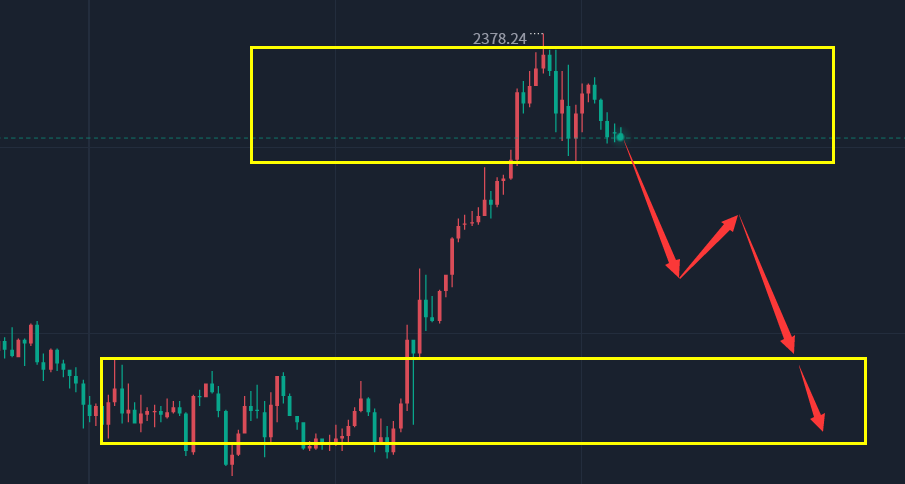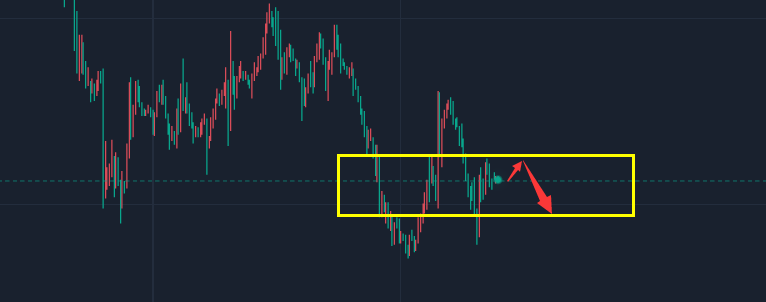【作者】王雨歆;
【导师】王建州;
【作者基本信息】东北财经大学风电场风速模型,统计学风电场风速模型,2017,硕士
【摘要】 随着可持续发展在能源领域的不断深入,传统能源在资源含量、利用成本及环境污染方面的劣势逐渐显现,可再生新能源的开发与应用成为世界各国关注的热点,风能凭借其易获取、高储量、可再生的优势在众多新能源中脱颖而出。在风能相关的工程研究以及风电场的一般运作中,风速是需要考虑的重要要素之一,尤其是对于风力发电行业而言,风速可以决定发电机的转速进而影响发电功率。但在实际操作中,风速自身的波动性与间歇性往往会增加风电可控难度,导致风电机组发电功率不稳定,影响输出的电能质量,对电网运行的安全性造成威胁。因此,短期风速预测是风电相关工作中必不可少的环节,较为精确的风速预测结果能够在一定程度上为电网提供预警,方便电网调度,从而达到规避风险,降低损失及提高资源利用效率的作用。由此可见,发展具有高精度的风速预测方法具有十分重要的现实意义。对于短期风速预测,国内外学者进行了大量的研究,近几年随着预测精度要求的不断提高,现有单一统计模型已逐渐不能满足相关领域对预测精度的要求,除了在己有模型的基础上提出改进之外,将两种及以上的方法进行结合以建立新的混合模型成为时下较为流行的预测方法,其中就包括利用智能优化算法优化神经网络模型参数。
然而,对于优化算法与神经网络预测模型的选取不同,建立的混合模型种类不同,其预测效果也会千差万别,因此如何选择最优模型是一个极具讨论性与现实意义的问题。为了解决以上问题,本文以短期风速序列为研究对象,选取2011年中国山东省蓬莱风电场44号风电机组记录的风速数据(间隔10分钟),通过大量对比实验寻求更为适用的预测模型以提高预测精度进而提高风能利用率,为相关领域提供数值参考。鉴于风速自身特性与神经网络在预测非线性数据上的适用性,本文以BP神经网络(BPNN)为基础预测模型,将不同优化算法与BPNN模型结合,提出三种混合预测模型并将其应用于短期风速预测实证研究。本文主要工作可概括为以下几点:首先,采用纵向数据集选择方法确定BP神经网络输入及输出变量,并在此基础上划分网络训练集与测试集。其次,将历史风速数据按照季节划分,对各季数据分别采用经验模式分解(EMD)方法进行数据分层处理并剔除高频信号,从而减少原始数据中非平稳信号对预测所带来的不利影响。考虑到BPNN模型预测时间序列时易陷入局部极小的缺陷,采用三种不同智能优化算法对BPNN权值与阈值进行优化,建立基于不同优化算法的BPNN预测模型,包括群智能算法中的布谷鸟搜索算法(CS)与萤火虫算法(FA)以及启发式智能算法中的和声搜索算法(HS)。
本文在FA算法的基础上引入惯性权重进行改进,建立EMD-IWFA-BPNN模型并将其应用于短期风速预测中。最后,对实验模型作进一步讨论,将BPNN各模型与时间序列模型进行对比,讨论不同参数设置下BPNN模型的预测效果以及不同种群规模对优化算法收敛性能的影响。实验结果表明:(1)对于相同的预测长度,BPNN模型的预测精度比时间序列中的AR与ARMA模型更高,且三种智能优化算法均能进一步提高BPNN模型预测精度;(2)对比三种优化算法的寻优效果,与EMD-CS-BPNN模型及EMD-HS-BPNN模型相比,EMD-FA-BPNN模型在提高预测精度与预测稳定性方面均具有更好的表现;(3)相对于EMD-FA-BPNN模型,EMD-IWFA-BPNN模型能够得到更小的预测误差;(4)本文优化的BPNN预测模型在单步预测中的适用性更强,预测精度更高。本文结合大量国内外文献的研究成果,对与论文中内容相关的部分进行了系统总结并力求从以下几个角度有所创新:第一,以平均绝对百分比误差(MAPE)为主要评价标准,讨论各优化模型的预测精度的同时对比群智能算法与启发式智能算法的寻优效果。第二,作为启发式智能算法之一的和声搜索算法(HS)虽在多领域有着不错的应用,但在短期风速预测研究中鲜少涉及,本文将和声算法应用于风速预测,优化BPNN权重,以验证和声算法对提高预测精度的有效性。
第三,在网络及算法各参数不变的条件下,对于有限的训练集,将单步预测与多步预测结果进行对比分析,讨论了设置不同的预测步数对预测精度的影响。第四,对实验中表现最优的FA算法进行进一步的改进,并引入惯性权重,建立了 EMD-IWFA-BPNN模型对风速进行预测,验证模型改进的合理性与有效性。虽然本文实验结论不能完全够代表最佳短期风速预测模型,但可为相关部门或研究领域提供数值参考,以减少风电场及电网不必要的经济损失。更多还原
【Abstract】 Along with the deepening of sustainable development in the energy field,the disadvantages of traditional energy in the resource content,the cost of the utilization as well as environmental pollution gradually appear,and the development and application of renewable energy has become the focus of world attention。Wind power stands out from various new energies with its easy access,high reserves and renewability。Wind speed is one of the crucial factors needed to be considered in wind energy related engineering research and the general operation of wind farms。
Especially for wind power industry,wind speed will determine wind power that will affect grid operation。However,in actual operation,the volatility and intermittence of the wind speed can tend to increase the controllability difficulty of wind power,which will lead to the unstable power of the wind turbine,affect the quality of the output power and pose a threat to the security of power grid operation。Therefore,the short-term wind speed forecasting is an indispensable part in the wind power system。
More accurate wind speed forecasting results can provide early warning for the power grid to facilitate the grid dispatching,so as to avoid the risk,reduce the loss and improve the efficiency of resource utilization。Thus,it is of great practical significance to develop high-accuracy wind speed forecasting method。For the short-term wind speed forecasting,researchers at home and abroad generally realized statistical forecasting according to historical data。In recent years,with the maturity of forecasting technology,the existing single statistical model has been unable to meet the forecasting accuracy requirements of relevant areas。
In addition to improve the existing model,combining two or more methods to establish a new hybrid model has become a popular processing methods,including the use of intelligent optimization algorithm to optimize the parameters of neural network model。However,as the different selection of optimization algorithm and neural network forecasting model and different types of mixing models,the forecasting result will vary widely。How to choose the optimal model is not only a great discussable problem,but also a question of great value for actual wind speed forecasting。
In order to solve the above problems,the short-term wind speed sequence is determined as the research object and the wind speed data(interval 10 minutes)from wind farm recorded by the 44thwind turbine in Penglai,Shandong Province in 2011 is selected in this paper。A large number of comparative experiments are carried out to search the more adaptive forecasting model to improve the forecasting accuracy and then improve the utilization rate of wind energy and provide numerical reference for the relevant areas。
Therefore,accounting for the characteristics of wind speed and the applicability of neural network in nonlinear data forecasting,BP neural network is selected as the basis of forecasting model and the different optimization algorithms are combined with BPNN model in this paper。Accordingly,three kinds of hybrid forecasting models are put forward and applied to short-term wind speed forecasting in empirical Research。In this paper,the main work can be summarized as the following:First of all,in order to build the BP network,this paper made use of the longitudinal data set selection method,then classified the network as training set and testing set。
Besides,the historical wind data used in experiment was divided into four seasons;the data of each season was pretreated by empirical mode decomposition(EMD)method respectively,which can transform original data into hierarchical IMF。By eliminating high-frequency noise,EMD can reduce the adverse effect of non-stationary signal on forecasting process。Then,in view of the deficiency in BPNN,which can easily fall into the local minimum point in time series forecasting,this paper combines BPNN model with different optimization algorithm,including cuckoo search(CS)algorithm,Firefly Algorithm(FA)as well as Harmony Search(HS)algorithm。
And then,in consideration of the good results which FA brings to,this paper introduce the Intertia-Weight to improve global optimization ability of simple FA,building EMD-IWFA-BP model which can be applied to the actual short-term wind speed forecasting。At last,there were plenty of further discussions about above-mentioned experimental models。For example,it makes comparison with BPNN and Time Series Model(AR and ARMA),and discusses the forecasting effect of BPNN model under different parameter and the influence of different population size on the optimization algorithm convergence performance。
Experimental results show that(1)the BPNN model forecasting accuracy is higher than Time Series Model(AR and ARMA),and three kinds of intelligent algorithms can further improve the forecasting accuracy of BPNN model;(2)Compared to three kinds of optimization algorithm,the optimization effect of firefly algorithm(FA)can get better performance on improving the forecasting accuracy and stability than the cuckoo algorithm(CS)and harmony search(HS)algorithm;(3)In the same conditions,the EMD-FA-BPNN model can get lower forecasting error than EMD-FA-BPNN model;(4)With the comparison of forecasting between one-step and mufti-step,the proposed optimizing models are more suitable for one-step wind speed forecasting。
Based on the research results of a large number of domestic and foreign literatures,this paper systematically summarizes and thinks deeply about the relevant parts of this article,aiming at some innovation from the following perspectives:First,the optimization results of swarm intelligence algorithm and heuristic intelligent algorithm were compared in the form of percentage forecasting error by BP forecasting model,regarding Mean Absolute Percentage Error as the main evaluation standard,which can reflect the prediction accuracy so as to reflect the optimization ability of different algorithms。
Second,Harmony Search algorithm,as one of the heuristic intelligent algorithms,has good application in many fields,but rarely involved in study of short-term wind speed forecasting。This paper applied HS into forecasting process of wind speed,optimizing the weights of BP network,in order to verify its effectiveness of improving the prediction precision。Third,under the condition of constant input layer,hidden layer,this paper compared and analyzed the forecasting results of the single-step and multi-step,which can illustrate the influence on prediction precision caused by internal behaviors of neural networks。
Fourth,the paper made the further improvement of FA which had the best performance in former experiments。By introducing Intertia-Weight,the new case was solved by improved model of EMD-IWFA-BP。Although the experimental conclusion in this paper cannot represent the best short-term wind speed forecasting model,but can provide numerical reference for relevant departments or research area,so as to reduce the unnecessary loss of wind farm and power grid。更多还原
【关键词】 短期风速预测;经验模式分解;BP神经网络;智能优化算法;
【Key words】 wind speed forecasting;empirical mode decomposition;back-propagation neural network;optimization algorithms;










发表评论